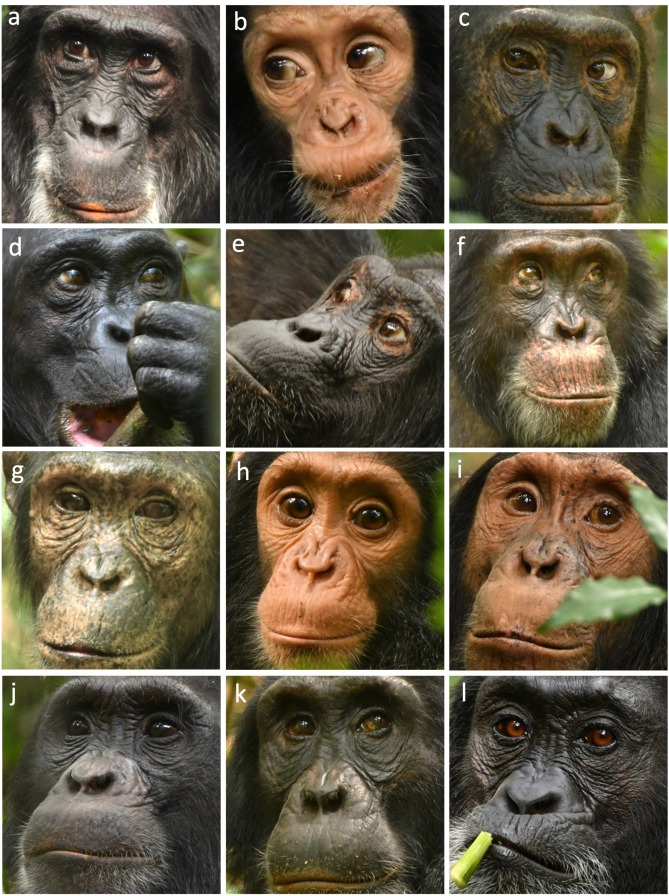New research indicates the 'whites' of human eyes are not uniquely human
Our eyes allow us to communicate with other people without needing to talk. This is in part because of the color variation between our iris and sclera (the white part of the eye), explains Kevin Lee.
Lee is an evolutionary anthropology PhD student at the School of Human Evolution and Social Change and is affiliated with the Institute of Human Origins at Arizona State University. Recently, Lee, along with a team of researchers, published data showing that enough chimpanzees have white sclera to make the characteristic more than just an anomaly among humans.
“White sclera is often considered a uniquely human trait in scholarly literature and popular media. Our study confirms that this is not the case. Almost one in six chimpanzees at Ngogo had full or partial white sclera in at least one eye, which tended to be more visible when gaze was averted rather than direct,” the researchers stated.
The team analyzed over 1,000 photos of 230 individual Ngogo chimpanzees who live in the center of Kibale National Park, Uganda. Many of the images were taken by Lee, who was able to use zoom lenses and equipment to capture the chimpanzees' faces and eyes. Other images used were from archives at the park.
“We were able to show at Ngogo that up to 15% of our individuals, across all ages, have fully white sclera,” Lee said, “or what we would consider to be a majority of white sclera. With another 40% to 50% having some sort of depigmentation that is noticeable.”
Lee said we can assume that chimpanzees are able to track each other's gazes and visual attention, since we as human researchers are able to track their gazes, to direct attention to danger or food sources, without needing to make noise. But Lee also notes that this may depend on head orientation, much like that for humans, as well as eye morphology that may play a role. Current research is happening on chimpanzees in captivity to learn more about these behaviors.
“Because we had such a large data set, including lots of young individuals, we were able to notice that this seems to have a clear developmental trajectory to it,” Lee said. “Really young individuals under 1 1/2 have a much, much, higher prevalence of depigmentation. In our community, about 70% of them had some form of depigmentation. But by the time they reach ages 3 to 5 a lot of them have lost this depigmentation, or white sclera.”
The researchers were able to study the same chimpanzees over a long period of time, and they were able to collect data showing that as some individuals became older, their sclera became darker.
Lee explains this could all hold some key information into how humans evolved and why our sclera are white. He points out there are a lot of other domesticated species that exhibit what is known as neoteny, the retention of juvenile traits into adulthood. More will need to be researched into why some chimpanzees still have white sclera and some don’t.

Examples of eye pigmentation in 12 Ngogo chimpanzees: (a–c) majority white sclera; (b–f) majority white sclera only when gaze is averted; (g–i) intermediate sclera; (j–l) majority dark sclera (with dark iris, depigmented patches on sclera, and light iris, respectively. (a) Pincer, 33 years; (b) Gatsby, 0.7; (c) Baez, 16.7; (d) Fiona, 21.5; (e) Hester, 18; (f) Dexter, 34.7; (g) Khutulun, 17; (h) Dorothy, 1.8; (i) Gus, 11.4; (j) Billy Bragg, 13.5; (k) Buckner, 19.7; (l) Wilson, 18.5. (For interpretation of the references to color in this figure legend, the reader is referred to the Web version of this article.) Image courtesy the Journal of Human Evolution
Several areas of this discovery should be, and are being researched more extensively, explained Lee, including how heritable is the trait, how having white sclera may affect the way the chimpanzees are able to interact with others in the community, and why do the infants have more white sclera than adults?
For another part of the research, team members Isabelle Clark and Tucker Poux spent a lot of time taking pictures of various mammal species at different zoos in New York. Out of 70 species, they found that at least 19 had one animal in the group with a white sclera, Lee said.
“One of the big key things in scientific pursuits is to always challenge existing dogma,” Lee said. “This idea that humans are unique was prevalent across all domains for a very long time, and slowly science has been chipping away at that. It’s clear that humans are special in certain ways, but we are not quite as unique in various domains as people liked to think before. You just keep chipping away at the existing dogma. It’s important to remember that just because everybody thinks it doesn't make it true.”
The article “White sclera is present in chimpanzees and other mammals” is published in the Journal of Human Evolution.
Video courtesy the School of Human Evolution and Social Change